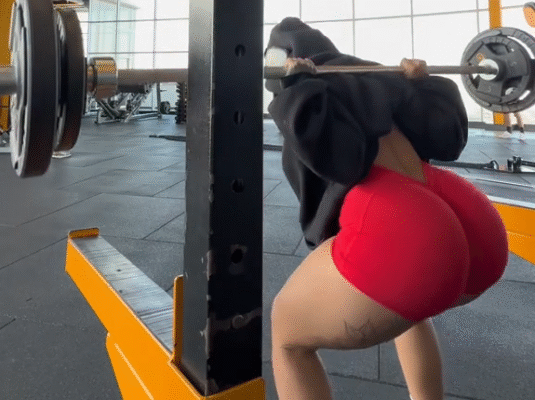In an age where sedentary lifestyles dominate much of the modern world, the importance of staying physically active has never been more pressing. The human body is designed for movement, and exercise is one of the most effective ways to ensure that our bodies function optimally over time. Whether you are aiming to lose weight, boost your mood, enhance your energy levels, or simply maintain overall health, regular exercise plays a pivotal role. The sooner you start, the sooner you begin reaping the lifelong benefits. Starting to exercise is not just about looking good—it’s about feeling good, inside and out, and staying in shape both physically and mentally.

The Importance of Staying in Shape
Staying in shape is more than just having toned muscles or fitting into your favorite clothes. It’s about maintaining cardiovascular health, joint flexibility, muscular strength, and a healthy weight. It also contributes to preventing chronic diseases such as diabetes, hypertension, and heart disease. Regular physical activity helps regulate blood sugar levels, boosts metabolism, and improves digestion. Exercise is also known to enhance immune function, making you less susceptible to common illnesses like colds or infections.
In addition to physical health, staying in shape profoundly impacts mental well-being. Studies have shown that regular exercise reduces symptoms of depression and anxiety. It stimulates the release of endorphins, often called “feel-good” hormones, which help in reducing stress and promoting a sense of happiness. People who stay in shape tend to have higher self-esteem, better sleep, and improved cognitive function, including memory and concentration.
Getting Started: Overcoming the Initial Hurdles
Many people hesitate to start exercising because they feel overwhelmed or believe they need to commit to intense workout routines to see results. This is a misconception. The key to staying in shape is consistency, not intensity. You don’t need to run a marathon or lift heavy weights to benefit from exercise. Simple changes in daily habits—like walking, stretching, or taking the stairs—can mark the beginning of a healthier lifestyle.
Start with activities you enjoy. If dancing makes you happy, consider joining a dance class. If you enjoy being outdoors, hiking or biking might be the right choice. The idea is to make exercise a regular and enjoyable part of your life rather than a burdensome chore. Setting realistic goals is crucial. Begin with short sessions, perhaps 15-20 minutes a few times a week, and gradually increase duration and intensity as your endurance improves.

Types of Exercise for Overall Fitness
To stay in shape, it’s essential to incorporate different types of exercise into your routine. The four main categories of exercise are:
- Cardiovascular (Aerobic) Exercise: Activities such as running, cycling, swimming, or brisk walking improve heart and lung health. Aim for at least 150 minutes of moderate-intensity or 75 minutes of high-intensity cardio each week.
- Strength Training: This includes weight lifting, resistance band exercises, or bodyweight workouts like push-ups and squats. Strength training builds muscle, enhances metabolism, and improves bone density.
- Flexibility and Stretching: Yoga or regular stretching routines increase flexibility, reduce the risk of injury, and improve posture and mobility.
- Balance and Stability Exercises: Especially important as we age, balance exercises like tai chi or standing on one leg help prevent falls and enhance coordination.
A well-rounded fitness program that includes elements from each of these categories will help you stay in optimal shape.
Building a Sustainable Exercise Habit
Developing a habit of regular exercise is often more about mindset and consistency than it is about physical ability. One effective strategy is to schedule workouts into your calendar just like any other important appointment. Treat them as non-negotiable. Accountability also plays a significant role. Having a workout buddy or joining a class can help keep you motivated and committed.
Tracking your progress can boost motivation as well. Keeping a journal or using fitness apps can help you see improvements over time—whether it’s increased strength, endurance, or weight loss. Celebrate your achievements, no matter how small. Each step forward reinforces the habit and brings you closer to your fitness goals.

Nutrition and Recovery: Complements to Exercise
Exercise is just one part of the equation when it comes to staying in shape. Nutrition plays a vital supporting role. Eating a balanced diet rich in fruits, vegetables, lean proteins, and whole grains provides the necessary fuel for physical activity. Staying hydrated is equally important, especially when engaging in vigorous workouts.
Recovery is another essential aspect of fitness. Your body needs time to repair and grow stronger. Getting enough sleep, taking rest days, and practicing relaxation techniques like deep breathing or meditation can enhance the benefits of your workouts. Ignoring recovery can lead to burnout or injuries, which may sideline your progress.
Age Is Just a Number
It’s never too late—or too early—to start exercising. While younger people might focus on building muscle or increasing endurance, older adults can benefit just as much from staying active. For seniors, regular exercise helps maintain independence, improves balance, and reduces the risk of age-related diseases like osteoporosis or arthritis.
Children and teenagers also need physical activity to support healthy development. Establishing the habit of regular exercise early in life sets the stage for a lifetime of good health. For families, exercising together can be a fun and effective way to bond while promoting a healthy lifestyle.

The Long-Term Payoff
The true benefits of exercise are often realized over the long term. Regular physical activity not only extends your lifespan but also enhances your quality of life. It allows you to participate in activities you love, keep up with your children or grandchildren, and enjoy a higher level of independence as you age.
Moreover, exercise can provide a sense of purpose and structure to your day. It helps you build discipline, resilience, and a positive mindset—all of which are valuable in every area of life. People who stay in shape often find that their improved physical condition spills over into other domains, such as work performance, relationships, and personal development.
Final Thoughts
Starting to exercise might seem daunting, especially if you’ve been inactive for a while, but the rewards are well worth the effort. By making physical activity a regular part of your life, you invest in your health, happiness, and future. Staying in shape doesn’t require perfection—it requires persistence. Start small, stay consistent, and most importantly, listen to your body. The journey to better health begins with a single step, so take that step today. Your body and mind will thank you for it.



